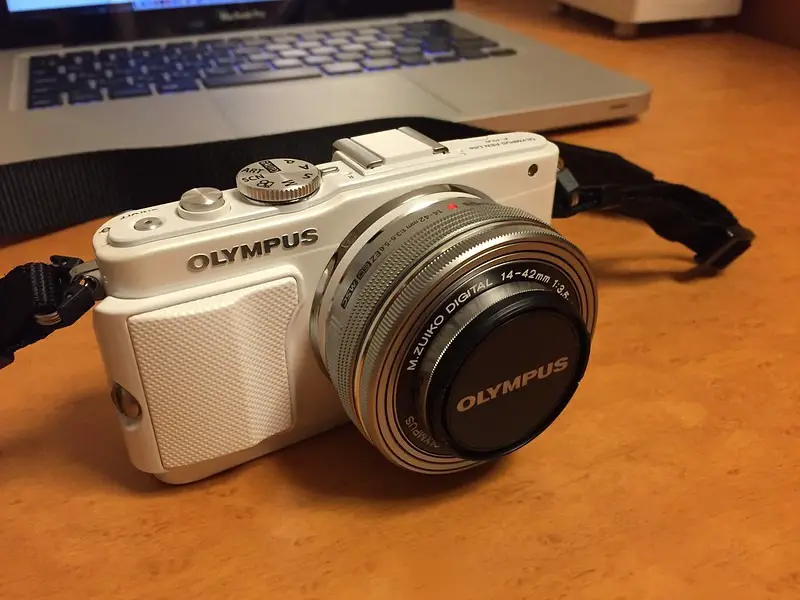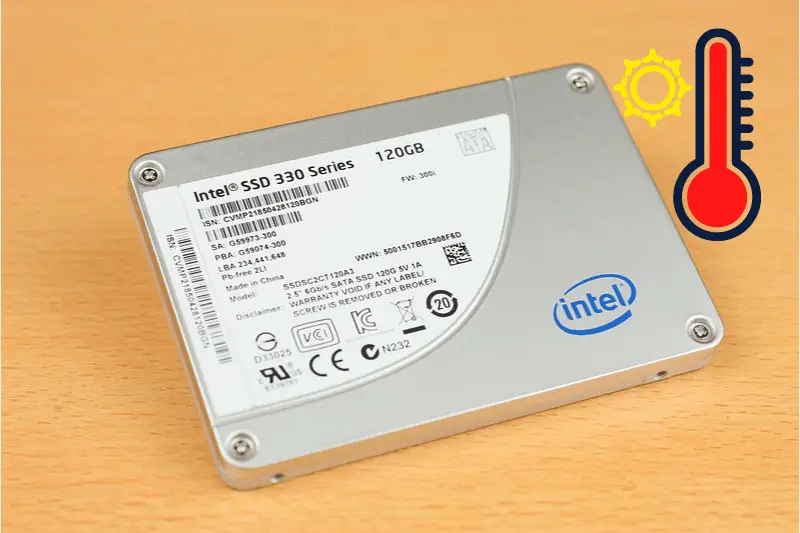Since their introduction to the market, mirrorless cameras have enjoyed a significant uptake in the video and photography world.
If you’re looking to get into photography or videography or simply looking to upgrade your current camera gear, going for a mirrorless camera would be a great option.
Here we’ll look at a few details regarding the durability of mirrorless cameras.
Here’s how Long a Mirrorless Camera Can Really Last
The truth of the matter is that it all depends on how well you maintain it. Given the build quality of mirrorless cameras, they can last 10+ years if properly maintained and only naturally fail you when critical components like the sensor or image processor break.
Table of Contents

Are Mirrorless Cameras More Durable?
Trying to determine whether all mirrorless cameras are more durable than all the other DSLR counterparts would be an impossible thing. The most compelling factor for this is that both camera systems have several available models ranging from low-end to high-end.
With that in mind, it’s a safe assumption that cameras in the high-end spectrum of both camera types would be better designed and sturdier compared to those in the low-end.
That said, however, it’s worth noting that in the case of mirrorless cameras, many of the models considered cheaper, often offer better protection standards compared to similar DSLR models.
A general argument for the durability of mirrorless cameras can be made because they have fewer moving parts within them. Having more mechanical components in any device makes it prone to faults since the more moving parts there are, the more points of breakage it has.
Overall, when talking about durability, it genuinely comes down to how well you use and maintain your camera, no matter its type. Avoid dropping it at all costs as this reason is the biggest reason for creating faulty cameras.
Do Mirrorless Cameras Wear Out?
The simple answer is yes.
The reason being that a mirrorless camera comprises many parts, some of them mechanical and others electronic.
Each of these two types of components has different weaknesses, but all in all, damage to them can render the camera unusable e.g. Physical shock can break both internal and external components, moisture and dust can affect the electronic components.
Does Mirrorless Camera Have Shutter Count?
Mirrorless cameras have the advantage of having lesser mechanical components compared to DSLRs. In this context, many assume because of this aspect, that they lack mechanical shutters since they have electronic shutters.
Shutter count refers to the number of photos a camera has taken so far in its lifespan. For amateur photographers, this number may not be something to think about, but pro camera users keep it in mind throughout their camera use.
The reason why that is is that pro photographers consistently use their cameras, and as such, take vastly more pictures than amateurs would. This fact means they increase their shutter count quicker than an amateur would.
That said, with mirrorless cameras having both an electronic and mechanical shutter, some may be uncertain which actuation to count. With both systems present, it remains relevant to only consider the mechanical shutter count.
(When looking to buy a used DSLR camera, considering the shutter count should be your priority. Like mentioned, it indicates how many photos the camera has taken so far. Comparing this figure to the total expected number of actuation for the camera can help gauge the length of service to expect from it.)
Which Parts of a Mirrorless Camera Are Replaceable?
A mirrorless camera has several components that comprise it, making it whole as is the case with all electronic devices. With that said, some parts are easy to replace should they run into some faults.
Below we highlight a few of those components that you can hope to replace on your mirrorless camera:
Lens
Mirrorless cameras (like most DSLRs) use a system of interchangeable lenses to work. That being the case, right off the bat, you can rest easy that if any of the lenses you use with your camera break, you can easily buy another of the same type. (Though this may prove costly if you don’t take care of your lenses!)
Battery
Mirrorless cameras use removable chargeable batteries to power them up. Some are even capable of using a direct current to power them when functioning. That said, a faulty battery can be replaced by a new one whenever the need arises.
Eye Cup
Eyecups have two main functions. First is that they help block out light from entering your field of vision as you look into your camera’s eyepiece. Secondly, they prevent elements like dust from smudging your eyepiece as well.
Several things can cause them to wear out and eventually create the need for replacing. Luckily this part is one of the easiest to replace.
Cables
Mirrorless cameras use several cables (e.g. USB, HDMI, charging cables) to perform various tasks. If any of them fail, they are easily replaceable.
Flash
The flash on cameras can sometimes break down, causing interference with normal usage of the camera. The flashbulbs can, however, be replaced by consulting the manufacturer or professionals certified to do that.
Which Parts of a Mirrorless Camera Are Irreplaceable?
With several components to it, a mirrorless camera has a few that are regarded as critical. That implies their replacement is, at best difficult, and more commonly, impossible to achieve.
These parts include:
The Sensor
The sensor is responsible for capturing light which in turn gets converted into the resultant image. In all essence, it can be considered to be the heart of the camera.
Damage to this component is as good as death for your camera since replacing it is impossible.
The Image Processor
If the sensor is the heart of the camera, then the image processor would be the brain of the camera. It controls several integral aspects of your camera, from how the image processing is done, to their eventual rendering for viewing, among several others.
The Internal Board
This component is comparable to a computer’s motherboard. It’s where all the circuitry related to the camera gets housed, as well as the image processor.
Is It Cheaper to Get a New Mirrorless Camera Vs Replacing Worn-Out Parts?
A mirrorless camera has several parts to it, all performing different functions, some more critical than others. The intensity of their importance implies more difficulty in getting them replaced should they go faulty.
For instance, the sensor and image processor are critical parts of a camera. They are quite literally the backbone of the whole camera setup, and replacing them is virtually impossible.
That’s because trying to do so would involve having to strip out several more components, such as the internal circuit board, which importantly houses those two parts. In the long run, this endeavor would prove uneconomic even if one were to really attempt to replace them.
On the other hand, most of the removable parts can be replaced. Along with several other external components (e.g. lenses, dials, and the eyepiece) can all be replaced with little effort.
In the long run, the answer to this solely rests on the type of damage your camera has incurred.
What are the Critical Parts of a Camera That Will Render It Useless If Broken?
In the context of cameras, a few particular components tend to stand out as being integral.
The Sensor
First up is the sensor, which is responsible for letting in light into the camera. This light is, in turn, converted into the resultant images that the user gets to perceive. In all essence, it’s the heart of the camera.
The Image Processor
If the sensor is the camera’s heart, then the image processor would be the brain of the camera. This component is comparable to the CPU in a computer.
It controls several integral aspects of your camera, the image processing, to the eventual rendering of these images for viewing, among several other functions.
The Internal Board
This component is comparable to a computer motherboard. This part is where all the circuitry related to the camera is held. It’s also connected to both the sensor as well as the image processor.
Damage to any of these components is as good as death for your camera since replacing them is impossible. The reason is that spare parts and the technical know-how to fix them are difficult to access.
What Factors Affect the Life of Your Mirrorless Camera?
Most cameras have an actuation count, which is the total number of shots they’re expected to take over their lifetime. This number exists due to the presence of a mechanical shutter. This shutter is expected to stop functioning when the total actuation figure is reached.
Mirrorless cameras have both an electronic and mechanical shutter. You can switch between the two depending on the type of shots you’re aiming to achieve. In this case, you can choose to always use the electronic shutter.
By doing so, you can avoid the pitfall brought about by the presence of a mechanical shutter and enjoy longer service from your camera. Other than that, how well you maintain your camera is all that matters in ensuring its longevity. Preventing physical shock from hitting it is especially important.
How Should You Care for Your Mirrorless Camera to Ensure Longevity?
Caring for your mirrorless camera involves taking a few simple steps towards maintaining it. As is the key with most other similar devices, good maintenance is the way to ensure longevity.
Some steps to think about concerning maintaining a mirrorless camera include:
Protection against the elements
While cameras come with a somewhat comprehensive exterior, extra care is still necessary to ensure good protection. Cameras shouldn’t be exposed to moisture or dust. These elements can interfere with the camera’s internal circuitry and render it unusable.
Prevent physical shock
This aspect is quite easily the most common means of killing any device. In the case of mirrorless cameras, it has several critical internal and external components sensitive to physical shock. (Caused by dropping the camera or bumping it against hard surfaces)
Proper lens placement
Lens are sensitive pieces of equipment and integral to the use of a camera. Having them damaged can leave you unable to make use of your camera.
On another angle, attaching them to the camera’s body should be done gently since doing so otherwise can damage the lens contacts, creating undue damage.
Good Battery care
The batteries need proper charging at all times to ensure they last. Overcharging or undercharging them often can shorten their life considerably.
Keeping up with firmware updates
Some models offer critical bug fixes and improvements to users which can enhance their use of the camera and better the experience.




